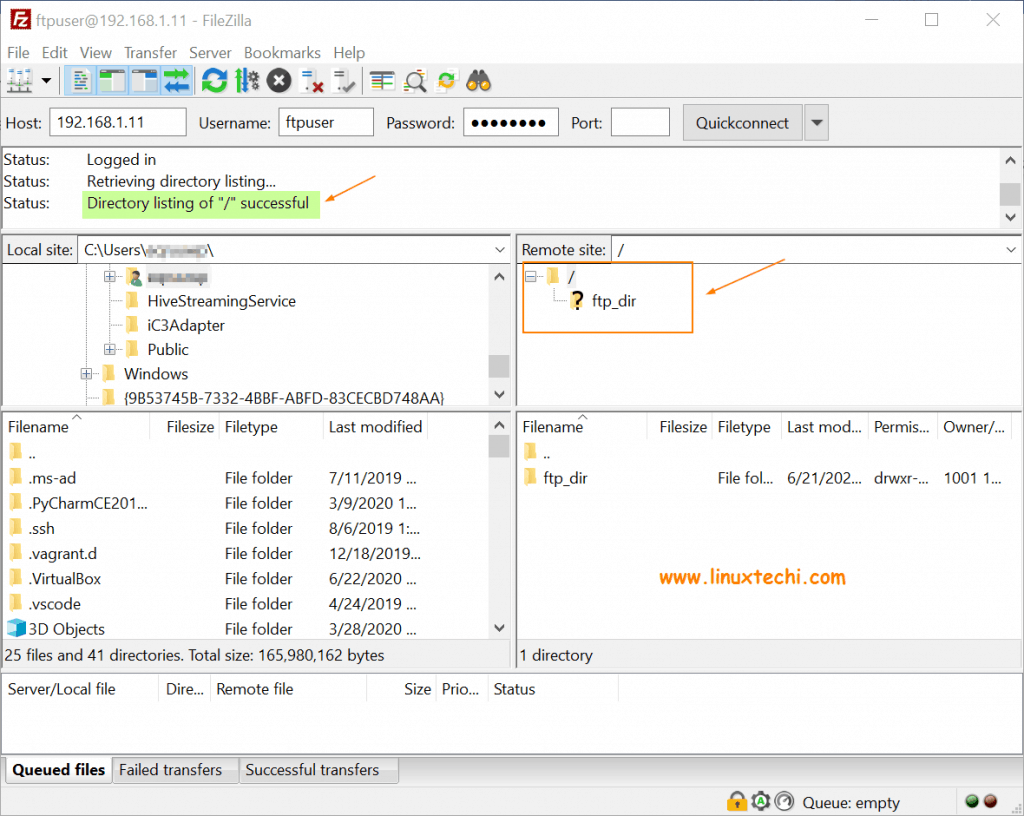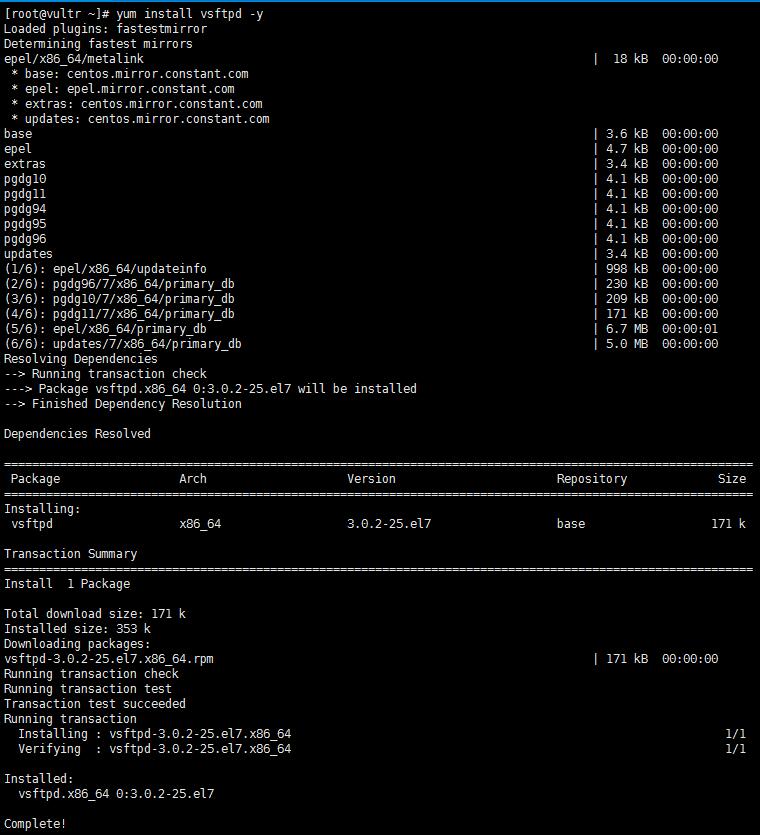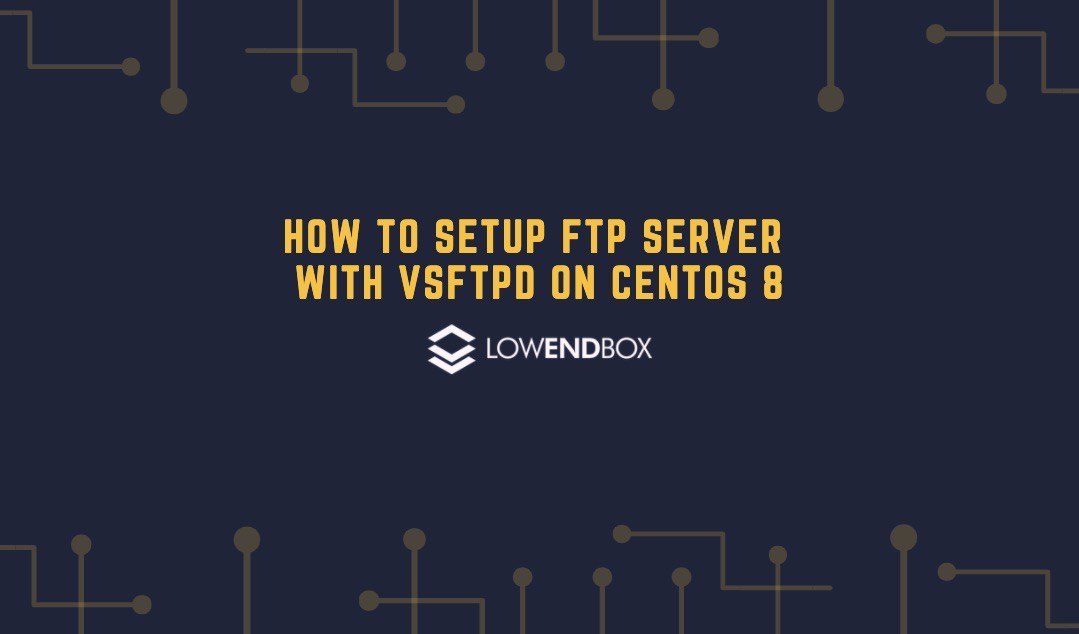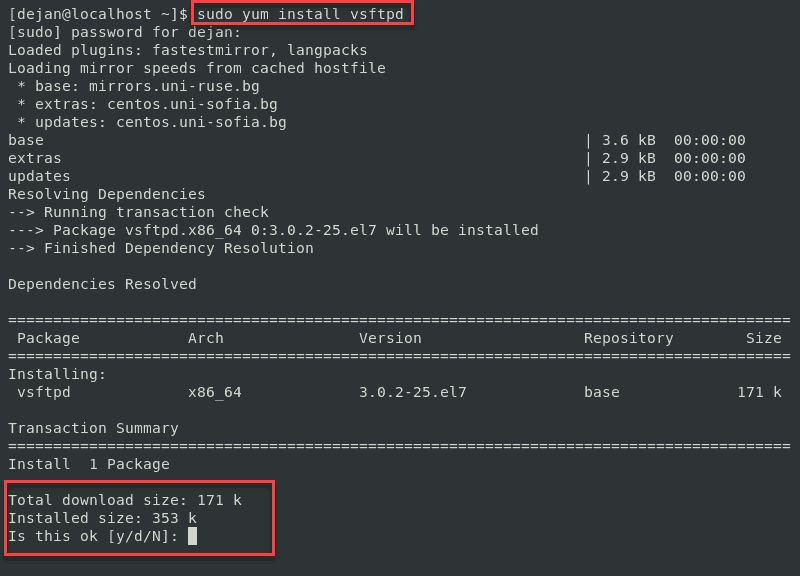
Install & Configure Vsftpd Server on CentOS/RHEL 6x
Install and configure Vsftpd On CentOS 7; Configuring Vsftpd With SSL/TLS. After installing vsftpd on CentOS 7 server, let us create a directory to store SSL certificates. mkdir /etc/ssl/private. Then, create the certificate and key files using the following command: openssl req -x509 -nodes -days 365 -newkey rsa:1024 -keyout /etc/ssl/private.

How to install and configure vsftpd in Centos and Rhel YouTube
Steps to Install and Configure vsFTPd on CentOS 7. Step 1: Install vsFTPd on CentOS. Step 2: Start the vsftpd service and auto start service on boot. Step 3: Install Firewall on CentOS. Step 3: Configure the firewall by creating a rule to all FTP traffic. Step 4: Configure VSFTPD. Step 5: Create an FTP user. Step 6: Configure SELinux to secure.

HOW TO INSTALL AND SETTING UP VSFTPD ON CENTOS SERVER Virtono Community
1. Start by updating the package manager: sudo yum update Allow the process to complete. This guide uses the VSFTPD (VSFTPD stands for "Very Secure FTP Daemon software package"). It's a relatively easy software utility to use for creating an FTP server. 2. Install VSFTPD software with the following command: sudo yum install vsftpd

How to Install vsftpd (ftp server) on CentOS 8 / RHEL 8
Step One—Install vsftpd You can quickly install vsftpd on your virtual private server in the command line: sudo yum install vsftpd We also need to install the FTP client, so that we can connect to an FTP server: sudo yum install ftp Once the files finish downloading, vsftpd will be on your VPS.

vsftpd installation on centos 8 YouTube
By default vsftpd is available in CentOS / RHEL repository. Just run this command to install vsftpd: sudo yum install vsftpd After installation, start vsftpd using this command: sudo systemctl start vsftpd To automatically start at boot time, we need to run this: sudo systemctl enable vsftpd Now let's check is the vsftpd service running or not:

centos 7下vsftpd配置ftp服务安装 菜鸟之志
Using Virtual Accounts with VSFTPD (Very Secure FTP server) and MySQL on CentOS 5 0.0.1. Advantages of virtual user accounts compared to local users Storing usernames and passwords in a database is easy to maintain, even for local managers not familiar with Unix security models.

How to set up an FTP Server on CentOS 8 using VSFTPD VITUX
Install vsftpd and openssl packages on the Centos 7 Linux server $ sudo yum install vsftpd openssl mod_ss. Switch to root user and enter root password. FTP data is usually insecure since information (usernames, passwords, commands, data) is transmitted unencrypted in clear text. Therefore it's very IMPORTANT to encrypt the FTP connection.
How To Install A VSFTPD FTP Server On CentOS 7 devopszones
The main configuration file for vsftpd on CentOS is kept in the /etc/vsftpd/ directory. It is called vsftpd.conf. Open this file in your editor with root privileges: sudo nano /etc/vsftpd/vsftpd.conf We need to adjust some basic parameters in this file to increase security and establish our connection options.

Centos 7 VSFTPD Installation Initial configuration YouTube
To enable root user in vsftpd, remove root from /etc/vsftpd/ftpusers and /etc/vsftpd/user_list and restart it ( systemctl restart vsftpd ). I've now verified it all works: I've installed vsftpd in CentOS 7 in default configuration (haven't changed a thing) in VirtualBox. SeLinux is left on by default as well ( enforcing ),

How to Setup FTP Server with VSFTPD on CentOS 8 LowEndBox
Installing vsftpd on CentOS 7. In the default CentOS repositories, the vsftpd package is available. Use the following command to install it: sudo yum install vsftpd Start the vsftpd daemon once the package has been installed, then set it to launch automatically when the system boots: sudo systemctl start vsftpd sudo systemctl enable vsftpd

How to Setup & Install an FTP Server With VSFTPD on CentOS 7
Step 2: Install VSFTPD. To install VSFTPD on CentOS 7, run following command −. sudo yum install vsftpd. Once installation is complete, you can start service and enable it to start automatically at boot time with following commands −. sudo systemctl start vsftpd sudo systemctl enable vsftpd.

How to Install vsftpd FTP Server with SSL/TLS on CentOS 8
The Very Secure FTP Daemon ( vsftpd) is designed from the ground up to be fast, stable, and, most importantly, secure. vsftpd is the only stand-alone FTP server distributed with Red Hat Enterprise Linux, due to its ability to handle large numbers of connections efficiently and securely. The security model used by vsftpd has three primary aspects:

Cómo configurar el servidor FTP en CentOS Aprender Linux
Centos 5.x Centos 6.x Requirements Explanation of requirements. Root access to your server Server running Centos 5.x or 6.x Doing the Work Basic description of what will be done and what is expected. Install VSftpd and add a user: 1 2 3 yum install vsftpd useradd ftpuser passwd ftpuser Configure VSftpd:

Setting Up vsftpd Server on CentOS 8
It enforces secure connections to FTP servers by encrypting traffic send to and from the server, and by so doing, the file transfer is kept safe and secure from hackers. In this topic, we shine the spotlight on the installation of vsftpd on CentOS 8 / RHEL 8. Table of Contents Step 1) Install vsftpd using dnf command

How to Install vsftpd Server on CentOS / RHEL Computer How To
Vsftpd (Very Secure FTP Daemon) is an FTP server for UNIX-like systems, including CentOS / RHEL / Fedora and other Linux distributions. It supports IPv6, SSL, locking users to their home directories and many other advanced features. In this guide you will learn: Setup vsftpd to provide FTP service. Configure vsftpd. Configure Firewalls to protect the FTP server. Configure vsftpd with SSL/TLS.
How to Install and Configure vsftpd on CentOS 7
The vsftpd package is available in the default CentOS repositories. To install it, issue the following command: sudo yum install vsftpd Once the package is installed, start the vsftpd daemon and enable it to automatically start at boot time: sudo systemctl start vsftpd sudo systemctl enable vsftpd